In those times, when the bees lived on trees, in the hives and dupes, people in search of honey lured them and smoked them. Then there was a way of more humane mining of honey - breeding bees. People began to create homemade trees from wood and other materials. The main purpose of such structures was to simplify the process of obtaining honey. The basis of any hive is the framework, which, in turn, also exists both vertical, horizontal, and square.
Design of bee hiles
Often experienced beekeepers make trees from wood: pine or cedar. The use of willow, poplar or linden is also allowed. The tree should be well dried, and the walls for the walls are smooth and smooth. Bonding boards is more convenient to produce screws and drill, but it is possible and nails. Cancel the bee house should be bright paint and preferably 3 times a year.
As a rule, the traditional hive consists of 12 frames. In order to make a structure correctly, it is necessary to observe the size and proportions inside the house:
- frame thickness - 2.5 cm;
- the size between the adjacent framework is 3.8 cm;
- side strips must be lagging behind the wall of the hive per 8 mm;
- frames should not get to the bottom by 1.5-2 cm;
- in the multi-storey hives, the space between the frames is 1 - 1.3 cm.
Standard frame parameters for bees:
- the width is 2.5 cm. This width is most acceptable, since these parameters have honeycombs created by bees in wild conditions;
- the top plank according to the standard should have a thickness of 1,8 cm. Lower plan - from 1.5 to 2.5 cm;
- the optimal frame height is 14.5 cm. This parameter is more suitable for bees. Such frames are easy to move and operate. However, more honey can be mined from a frame of 30 cm high.
Classification of frames for hives
Types of frames:
- Nest frames where bees are fruit. In the honeycomb such hives it is necessary to place honey and perdic reserves.
- In the shopping framework, the bee often laid honey.
- Standard 43.5 cm long frames and 23 cm high.
- Medium socket frame: Length 43.5, height 30 cm.
- Rolved narrow-high frame. Dimensions 30x43.5 cm.
Wooden frame
Today, traditional wooden frames lose their friendly popularity. Beekeepers are increasingly preferred by plastic frames.
Advantages of wooden frames:
- with the help of the necessary materials, the frame from the tree can be made with their own hands;
- natural tree does not contain chemical impurities;
- wooden frames and hiles are well ventilated and saved heat.
Disadvantages of wooden frames:
- at air temperature +40 wooden frames are breath. Winter - wet and rot;
- insect pests and rodents it is easier to spray a wooden framework and thus spoil honeycombs;
- wooden hives are usually heavy and sometimes cause difficulties during transportation.
Advantages and disadvantages of plastic frames
Many beekeepers note that it is much easier to work with the plastic framework, largely due to the economy of the coaster.
Advantages of plastic frames:
- plastic frames are very durable. They are easy when transporting and prevent the combustr's break;
- are suitable for use in any honeymills, even with heavy herase honey;
- has a longer shelf life than a tree;
- does not absorb honey;
- easy by weight.
Before working with a plastic frame, it must be coated with a uniform wax layer. In order for wax, as it should be distributed over the surface, you can dry it with a hairdryer or omit in warm water. If the water is too hot, then plastic is deformed.
Frames made of plastic do not proceed, unlike wooden. When rotating in the medogonka, such frames do not break even with the most extreme revolutions. The advantage of plastic frames is that they are not covered with mold and do not bend. This framework is difficult to spray rodents. The deadline for the quality of the plastic framework is about half a century.
Disadvantages of plastic frames:
- plastic is very fragile. With the slightest damage to the plastic frame, it will not be possible to restore it. Wooden frames, in turn, to easily repair nails;
- bees are badly treated with a coat on plastic;
- effective only with active swore formation.
Permissible number of frames in the ulle
Hives are absolutely different sizes and species. And only by analyzing the specifics of the bees surrounding the climate, you can choose a certain kind of hive. The houses for bees can be one-story and multiple housings. An important parameter when choosing a hive is the number of frames. They are:
- 8-frame hives. Such hives are actively using many beekeepers, both lovers and professionals. Their use is advisable at the very beginning of the occupation of beekeeping, for young bee families or early spring.
- 12-frame hive. They can be found in the territories with a large number of honey. As the insect family expands, since the middle of the summer, the hive expand to 16 frames.
- 16-frame hive. The largest size for the bee family. In rare cases, when the bees bring a lot of honey, the hive expands.
- 24-frame hiles are needed in cases where you were able to create a real bee farm and many insect families. It is better when 24 frames are located in a single-populated ule-sun, so it is easier to care for it. In the case when the frames are placed in separate cases, it is somewhat more complicated to inspect the bees.
Size frames for hives
Depending on its sizes, the evidence can accommodate both 8 frames and 24. But there is a certain classification of sizes for different types of frames:
- dadana-Blatt's hive has a frame with a height of 300 mm, a width of 435 mm. The top plank must retreat from two sides of 1.5 cm;
- the lagorestrop-root frameworks have the same parameters, but the height of the frame has an indicator of 255 mm, the upper bar retreats from two sides of 1 cm;
- in the Ukrainian model frame design a little more difficult. Its width is 300 mm, height - 435 mm;
- shopping frame is similar to Dadana-Blat. Only the height here is 14.5 mm.
Frame manufacturing technology involves the use of a special machine. However, professionals can do without it, only need much longer to create every detail. In any case, to collect a wooden frame in one design, you need to use the hammer, wire and other necessary tools.
Neset frame with your own hands
In order to make a nesting frame for bees with their own hands, you need to cut two side planks in advance from the tree, the top bar and the bottom.
Manufacturing technology:
Before starting the fastening between the harvested parts, prepare the metal wire and the screwdriver.
- In the lateral bar, overcast, the diameter of which is 1 mm. These holes are needed to produce wire through them. On two of the same holes, take up the top and bottom of the plank.
- Upper and lower bars secure screws to side straps.
- In the existing holes with a wire and lock it from below. Wire in the frame is needed so that the Wagon can fasten well. So that the wire tension is as high as possible, the holes are needed by the template. Wire rows should be strictly parallel and smooth.
Frame for the Ulya Dadana-Blatt and Lezhaka
The process of manufacturing such a frame is quite simple. To work, you should stock dry wooden blanks, thin wire, nails, hammer, seer and pliers.
Manufacturing technology
The external sizes of the frame for bees will be 43.5x30 cm. To begin with, drink the planks from the tree in size, as in the figure.
- With the help of small nails, collect the planks into a single design.
- When you get a frame, on the side boards, make a sewing hole with a distance of 6 cm.
- Steel wire designed specifically for the needs of beekeepers, it is necessary to turn through the top hole on both sides. Then, according to the principle of snake, stretch the wire in such a way that there is no overlap.
- When you get to the last opening, make a loop and tighten it.
- Then, with the help of pliers, pull the wire. But not too much so that the framework does not rush.
- By the same principle, the other framework is made. Next, you can train the finished frame.
Wire for a fear
Steel wire can be replaced with a solid caproic thread. The advantage of this method is the good tension of the thread and its elasticity. It is recommended to use a thickness of 0.5 mm thick for the bee frame. It is recommended to fix it with cloves. The end of the thread needs to be tightened several times around the nail and drive it down.
On the Kapron thread, the Watch is also kept as firmly as on steel wire.
Walking frames for bees
The carrier is called a subtle wax reservoir, on which hexagons are squeezed with the press - future cells for honeycomb. This material in beekeeping is most in demand.
After you have made a frame with a strained wire, it is necessary to consolidate the massacre of artificial production using Pekal. As a rule, wooden leafers has such dimensions: width 29.5 cm, length 45 cm, thickness 30 mm. On the blackboard with the applied fold, you must impose a frame with a wire. And the leaf determines whether you are folded correctly.
Frame extensions are performed by hanging the coaster to the frame with wire. Performing this procedure, it is necessary to pay attention to the fact that the upper rows of the framework are filled. Otherwise, insects will organize honeycombs across.
Framework for bees
After you have completed work on the creation of a frame for bees, you need to disinfect and clean the wooden elements. For this, the beekeepers experts recommend using a solution of propolis (10%) in alcohol (70-90 °). Alcohol can be replaced by moonshine (90 °). Such a solution is well absorbed into the tree and is an excellent antiseptic that instantly evaporates. When the coating dries out, the film remains on the tree. This film is a protective layer and prevents the formation of mold and other infections. In addition, bees react normally to such a coating.
Storage frames for bees
One of the important points in the process of occupation of beekeeping is also the organization of the proper storage of the frames for bees. It is important to keep the wax frame from damage to rodents and harmful insects.
The most dangerous wax moth in this case, which can destroy the entire supply of cells. As soon as the mole hits the cells, it begins to leave the larvae there, which destroy the cells. Therefore, directly during the process of pitching honey, you need to take care of the protection of the cell. If you find traces of tracks, you need to immediately process honeycomb cells, per 20 ml per 20 sockets.
Right from the medogon frame moves to hermetic packaging. It is well scared by mole orange peels and mint, which can be put on the frame and to the exhaust.
From rodents it is necessary to use mousetrap and poisons. The cells are cut off the frames and stored in dense bags.
Shopping frames in the fall are cleaned and transferred in dry storage rooms. Another bee enemy is a bird of Sorokop.
Avoid the emergence of ants near the hives. These insects can penetrate the hive, exterminate bees and their uterus. It is possible to prevent the appearance of ants, it is enough to lubricate the legs of the leverage or another viscous agent.

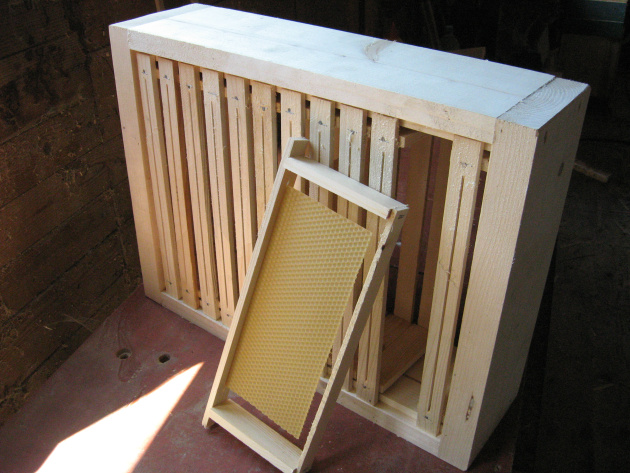
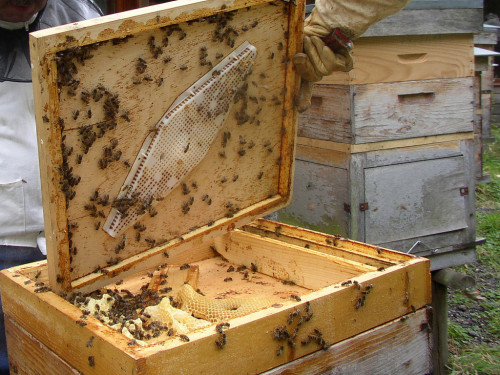
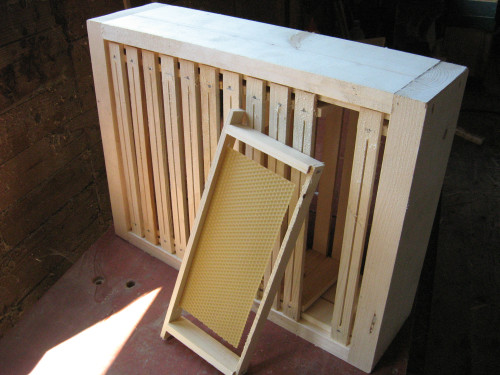
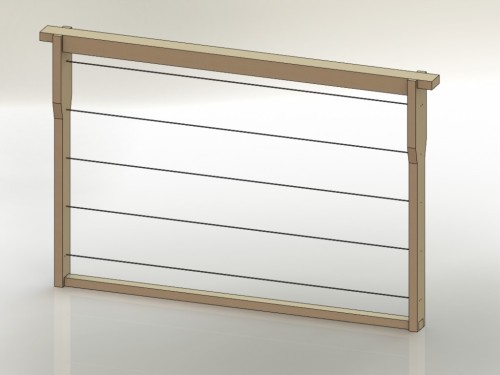
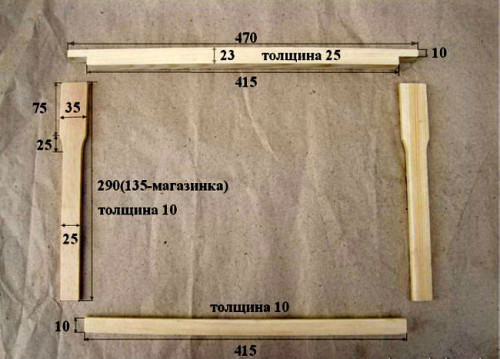
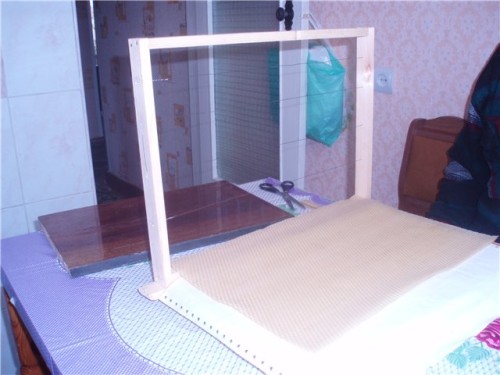
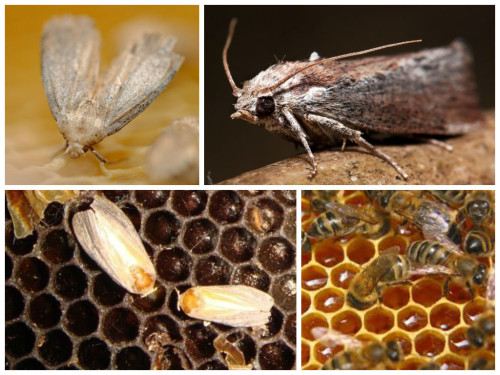
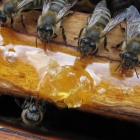
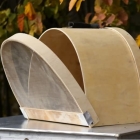
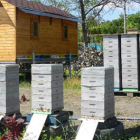
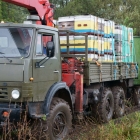
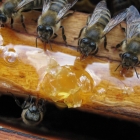
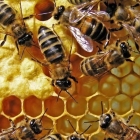
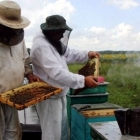
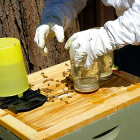
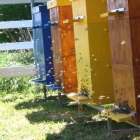
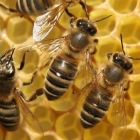
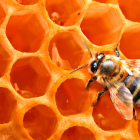
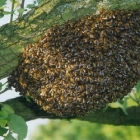
 Start a discussion ...
Start a discussion ...